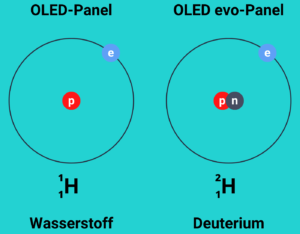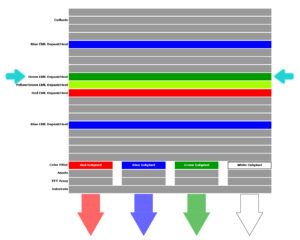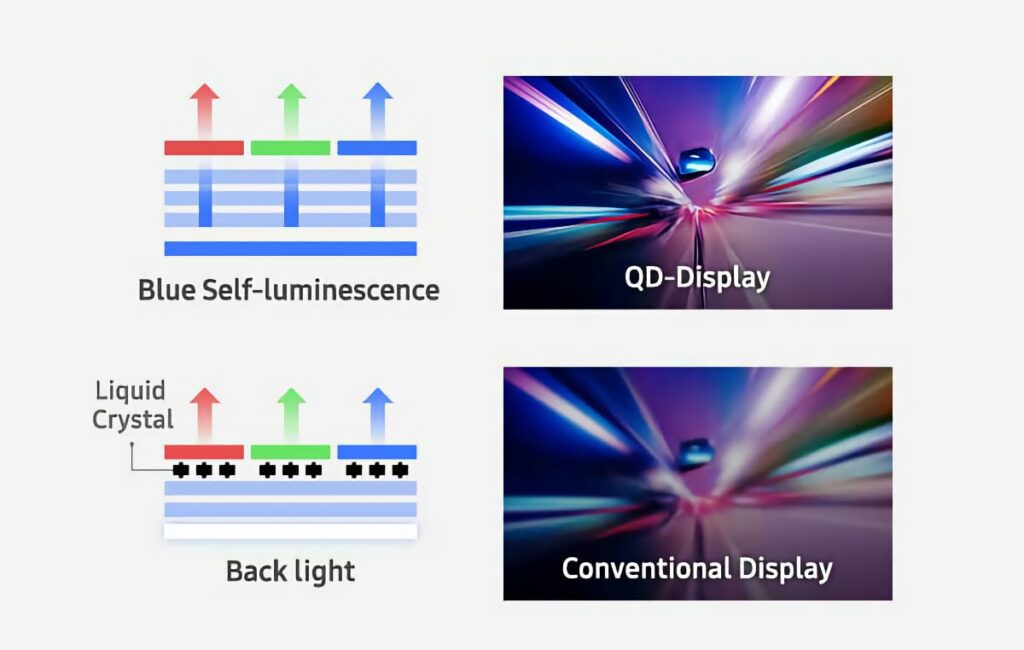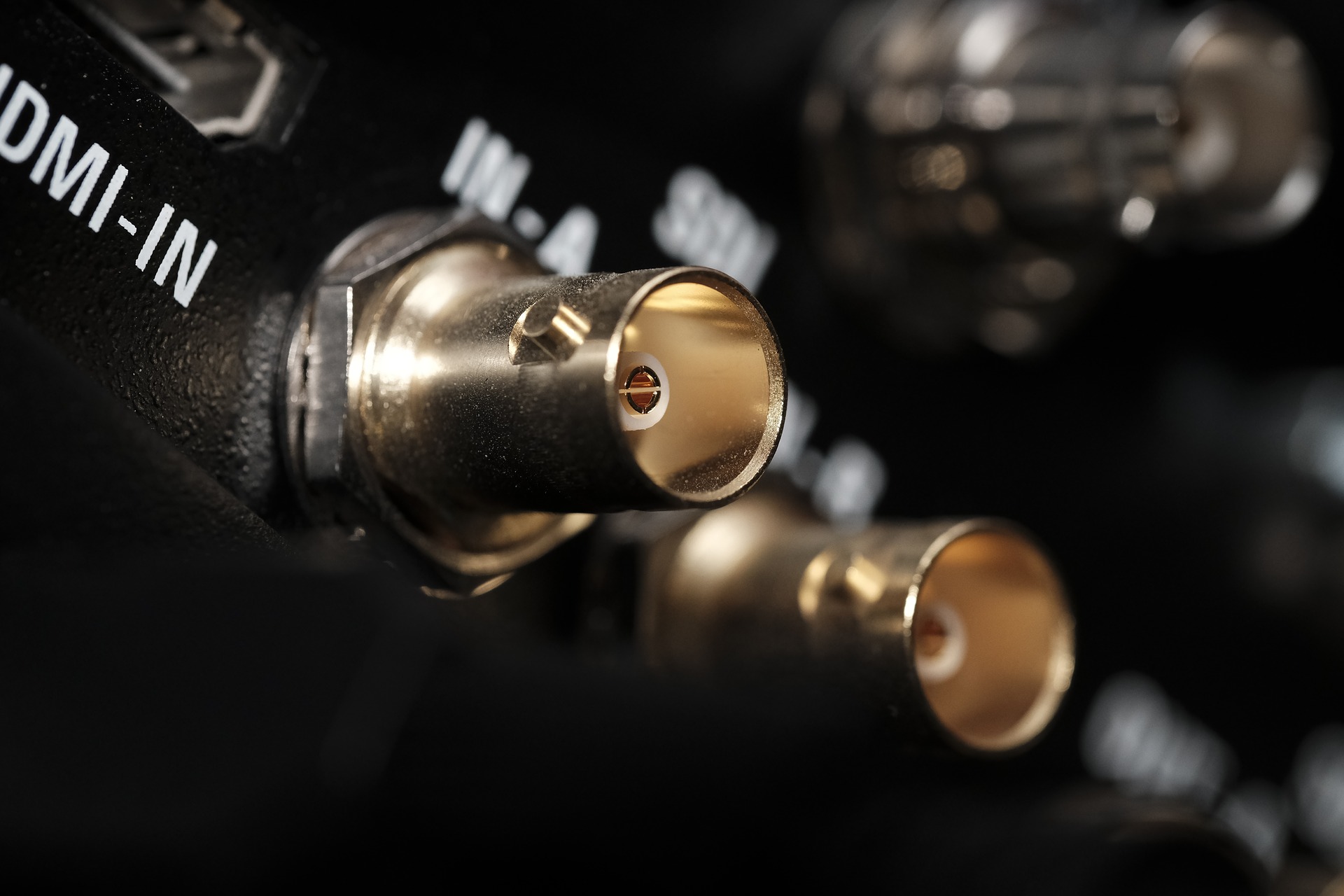Burn-in on OLED TVs
OLEDs are highly popular and could replace LCD-LED devices in the future. But even with the new, significantly brighter models made by LG, Sony and Panasonic, there are still concerns about burn-In, are they? We’ve summarized the most important information on this polarizing topic for you below.
Burn-In: Details & Explanation
One of the most discussed topics with OLED televisions is the so-called burn-In. This phenomenon is nothing new. The problem already arose at the time of plasma panels and caused discussion about the longevity of the corresponding devices. Ultimately, the flaw not only deterred customers from buying, but also forced manufacturers to change their course with time. OLED and LED televisions now dominate the sales market. While the burn-in risk is still an issue with this technology, LED models bypass it entirely due to their backlight.
What is burn-in?
You can imagine the so-called burn-In as a kind of image leftover on the display. A more or less strong, shadowy contour remains permanently visible on the panel. This effect can occur with such intensity that texts remain readable and images remain recognizable even though the content has long since changed. While the effects on the first OLED generations were fairly significant, current models are now performing better in this field. At least that’s what the manufacturers like to suggest. But is this really the case, despite the enhanced maintenance functions?
Static content such as TV logos or news tickers are the main cause here and have a negative impact on the self-illuminating pixels throughout their lifetime. However, the longer the TV is exposed to the same material at maximum brightness, the higher the risk of long-term damage. But do televisions with OLED panels have to play the same content for several thousand hours in order to show an initial negative effect?
Structure of an OLED panel
The abbreviation OLED stands for “organic light emitting diode” and means that each pixel lights up itself or simply turns off completely when the picture is black. This is how OLED TVs achieve the almost perfect black level. Due to the WRGB pixel structure, all pixels are the same and can generate white or colored light themselves. This is only possible because each pixel consists of a red, blue, green and white subpixel that lie on top of each other. This guarantees the high color variety and accuracy.

However, the white pixels are the most sensitive here because they regulate the brightness. That’s why an OLED TV doesn’t have a separate backlight because the organic pixels of the panel take care of that themselves. However, if they get too warm with very bright content, they can lose their lifespan very quickly.
To preserve the durability of these pixels, they are dimmed accordingly, which results in a darker picture on an OLED TV compared to a QLED. If very bright, static content is now displayed for a long time, there is a risk of burn-in. Therefore, you should make sure not to use the TV at maximum brightness for a long time.
What are the results current long-term tests?
New long-term tests with OLEDs in extreme conditions reveal several interesting observations and confirm already known risk factors. In general, the following still applies today: as the luminance of a conventional OLED panel increases, the screen is more sensitive to burn-in effects. For example, comparatively low-luminance devices such as LG’s A series show significantly fewer noticeable signs than B and C series devices, even after thousands of operating hours.
But beware: other variables can have a huge influence on this behavior. As soon as a heat sink comes into play, the susceptibility and thus also the burn-in effect is greatly reduced. There are also differences between conventional OLED types and QD OLEDs. For example, QD-fired solutions appear to be more resistant to burn-in despite their higher luminance.
However, a drawback of the first technology generation is a quite large drop in peak brightness. The successor generation seems to have become less sensitive in this area. Another important influencing factor is the so-called pixel refresh. Further information on this maintenance function can be found in the chapter “Avoidance of burn-in“. As already mentioned, the conclusions above were achieved at extreme conditions and are not representative for daily use at home. However, fact is that even current OLED sets cannot be completely spared from burn-in over a long period of operation.

Avoidance of burn-in
The various manufacturers of different OLED TVs have meanwhile installed some functions and technologies in their TVs that are supposed to minimize the risk of burn-in as much as possible. Some functions happen in the background and the user does not notice them, while others should be performed manually at regular intervals to maintain the TV.
Pixel-Shift
One possible function to further minimize a burn-in risk is Pixel Shift. This shifts the entire image up, down, or to the side by a few pixels without noticing. This way, pixels don’t permanently display the same thing, even if it’s static content. This prevents very narrow things like a crosshair from burning in during gaming.
Pixel Refresher
Pixel Refresh is a kind of maintenance program that activates when the OLED is turned off. Thus, all pixels of the OLED panel are adjusted to the weakest one. You can set how often a refresh should be performed in the corresponding picture settings. Here, there is also the option of doing a major “refresh” that completely removes image residue. If this does not happen automatically, it should be done manually every 2,000 to 3,000 operating hours.
Attention: Meanwhile, manufacturers bring models into the market that do an automatic refresh in standby mode. This procedure is time-based and runs automatically in the background every few hours after switching off. Therefore, you should avoid completely unplugging your TV when it’s idle in any case. Otherwise, the TV will not go through this maintenance process.
Automatic Brightness Limiter (ABL)
Another function that avoids burn-in is ABL or Automatic Brightness Limiter. This function limits the maximum brightness in large and bright scenes so that the corresponding pixels do not get too hot. As a result, the pixels don’t wear out as quickly and the TV itself doesn’t heat up too much either. However, one disadvantage is that the brightness of colors is also reduced and they look a bit darker.
Image settings
The above functions can be adjusted in the TV’s settings. For example, you can set how often the Pixel Refresh should be used and when a large refresh is useful. We show you which settings you can make to keep the burn-in risk low in our LG picture setting video.
New, brighter OLEDs
In the course of CES 2021, so-called OLED evo panels were presented, which are brighter than the previous panel technology. Do the new screens now mean an increased risk of burn-in? No, quite the opposite.
Structure of the OLED evo

To understand why a brighter image of all things reduces the risk of burn-in, we need to look a bit more into the exact structure of evo pixels. A normal OLED pixel consists of many layers that lie on top of each other. Among them are the four relevant layers, two of which are blue and the other two are red and yellow-green, respectively. Two blue layers are used because blue OLEDs are the most inefficient.

The OLED evo panels now have an additional, green layer, and the blue layers have also been significantly improved through the use of a new material. This is deuterium, a natural isotope of hydrogen that is generally referred to as heavy hydrogen. Deuterium has an extra neutron compared to normal hydrogen. Compared to normal hydrogen, deuterium makes blue OLEDs much more heat resistant, allowing them to be brighter and used more efficiently. Thanks to the use of deuterium, the OLED evo panels can now be significantly brighter and the burn-in risk is further minimized.
The new OLEDs from LG and Sony score with many improvements. Even though there are no long-term tests for these models yet, the new technologies speak for an even lower burn-in risk than the predecessors.
QD OLEDs without burn-in?
Samsung introduced the new QD OLEDs in January 2022, which are said to be free of burn-in risk. The new technology is supposed to deliver an even brighter picture, wider color representation, deeper blacks, a fast response time and a wide viewing angle. Samsung wants to achieve this by including an additional blue, self-luminous OLED layer in the panel. The Quantum Dots in red and green are on it; a white subpixel no longer exists.

Due to the new layer, QD OLEDs gain in brightness performance and the concern about the burn-in risk for users comes to the fore again. The risk still exists, but it is much lower than with the previous OLED technology due to the lack of white subpixels. In addition, TV devices have increasing possibilities to minimize a burn-in effect. Due to the uniform OLED layer, there is rather a degradation that happens step by step instead of an effective burn-in of individual pixels. This degeneration is physically caused and increases in the course of the service life. This means that OLED TVs are constantly getting “darker”.
LG OLED evo G2
LG also stays true to the flat motto of the Gallery Design and thus a concept that is as inconspicuous as possible in the G2. Nevertheless, the top model of the 2022 lineup is a bit “lower”. Why? It has to do with the installed heatsink inside.
In return, the TV ranks high in the OLED model elite with over 1100 nits. The preinstalled WebOS 22 also brings its own user profiles to the table and allows you to enter voice commands without having to use the Magic Remote via Hands Free Voice Control.
However, you do not get a stand. Instead, you will find the matching wall mount in the box to hang the TV on the wall like a picture frame. The sizes 55″, 65″, 77″, 83″ and even a huge 97-inch version are available. You can find out what we think in our extensive review of LG’s OLED evo G2.
Samsung S95B QD OLED
Samsung resisted jumping into the OLED boom for many years. However, the South Korean electronics manufacturer finally introduced its first OLED-based device to the portfolio in 2022. However, not without combining the model with the company’s own scent in the form of so-called QD-LEDs, also known as Quantum Dots.
These usually do their work in the brand’s backlit QLED TVs. The result is called Samsung S95B QD OLED and is the spearhead in the competitive OLED market.
Over 1200 nits paired with a wide viewing angle and numerous additional features make the S95B one of the best OLED TVs you can currently buy. Only the issue of Dolby Vision is still not one for Samsung.
Only a theoretical risk
If you want to buy an OLED because of its great picture quality, you should do so despite the burn-in risk. This is because the risk of burn-in is generally very low and only possible in theory in home use. Furthermore, the new evo panels additionally reduce the probability of burn-in risk. Moreover, long-term tests show that a real risk of burn-in can only occur with OLEDs under very long continuous load.
Due to the additional features and technologies of the manufacturers, which are getting better and better, the probability of a burn-in risk decreases more and more for the TV at home. However, if you need a TV for an office or a waiting room where you want to watch an information show permanently, we do not recommend buying an OLED. A QLED TV is much better suited for such cases.








